As I’ve been practicing using my lathe for a little while, I find I can save a lot of work and prevent loose fillings by starting with stock that is octagonal in shape. I have also found that octagons make for great tool handles. So for either use, it is handy to be able to take square stock and make it octagonal. Here is the method I use that relies on no measuring, no calculating and no power tools.
For this method you will need only the following tools:
- small straight edge or ruler
- pencil
- dividers or compass
- marking gauge
- hand plane set course (like a scrub plane or a jack plane) or a drawknife
Steps for making square stock octagonal
- Start with square stock. If it is not square, make it so. If you don’t, your octagon will be asymmetrical.
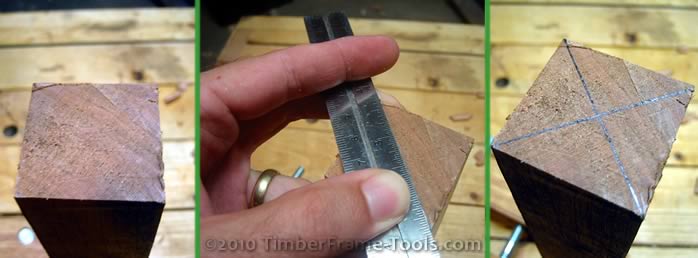
The center of the square is found by the intersection of the diagonals from the corners.
- Use a straight edge to draw diagonal lines from one corner to the other. This will identify the center of the stock. If you are going to put this onto a lathe, it is handy to repeat this step on the other end of the stock so that you know where the centers are on both ends.
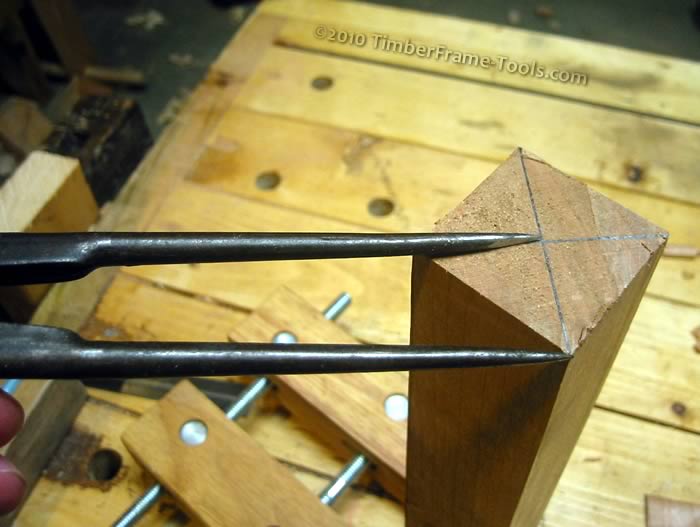
Measure the distance from corner to center. Can be done with dividers, compass, marking gauge, story stick, or ruler.
- Set your dividers or compass to go from the center, where the lines cross, to the corner.
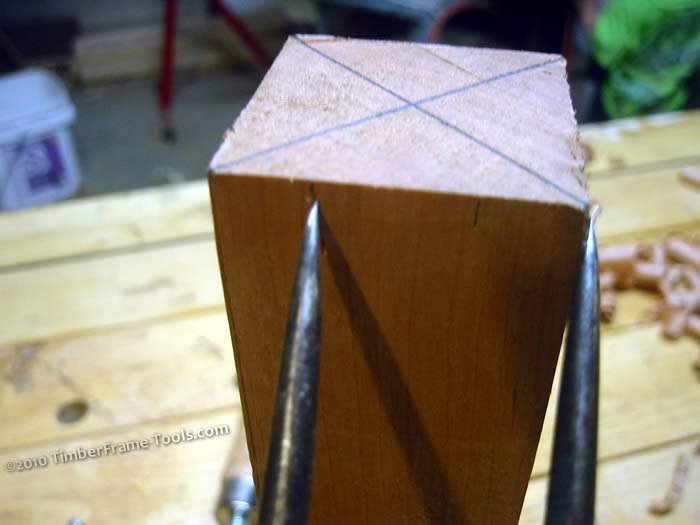
Transfer the measurement to the side.
- Transfer this length from your dividers to the side of the stock and make a mark on the side.
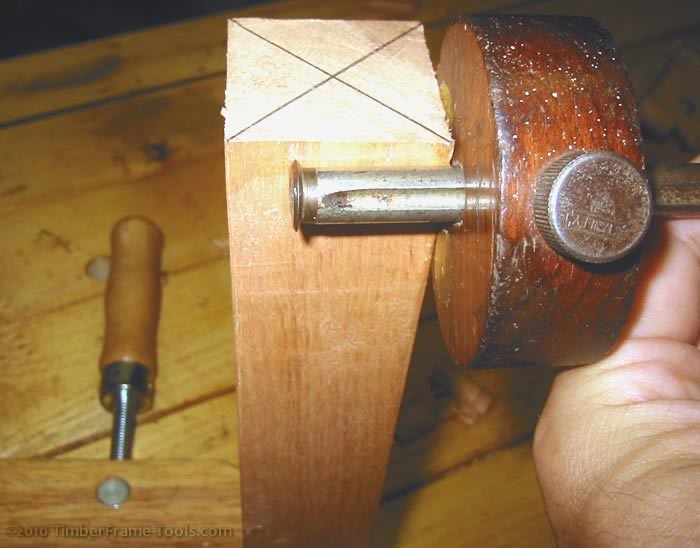
Marking gauge scribes the line down the surface.
- Set your marking gauge to meet that mark. Then drag the marking gauge down the entire length of the wood.
- Repeat the previous step three more times on each surface of the wood.
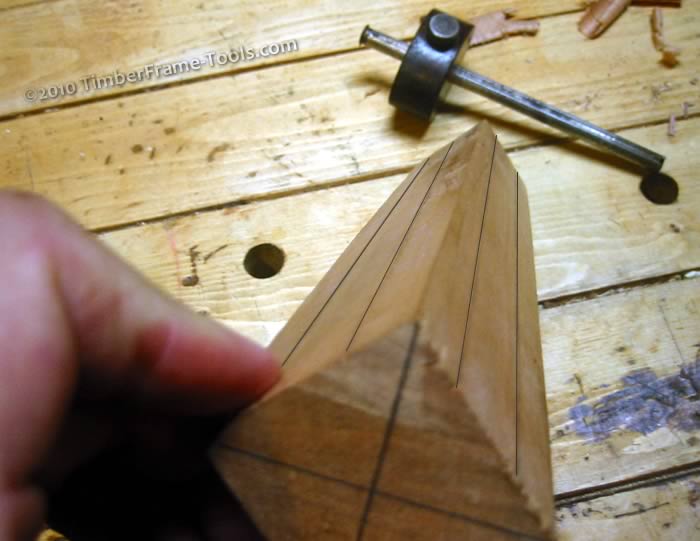
Here are the corners of the octagon marked on each surface. (2 lines per side) darkened with pencil for the photo
- Flip the wood end-over-end and repeat the marking on each face. When you are done you should have two parallel lines on each of the four long faces of the wood. The lines you just created will serve as the guidelines to let you know when you have planed far enough.
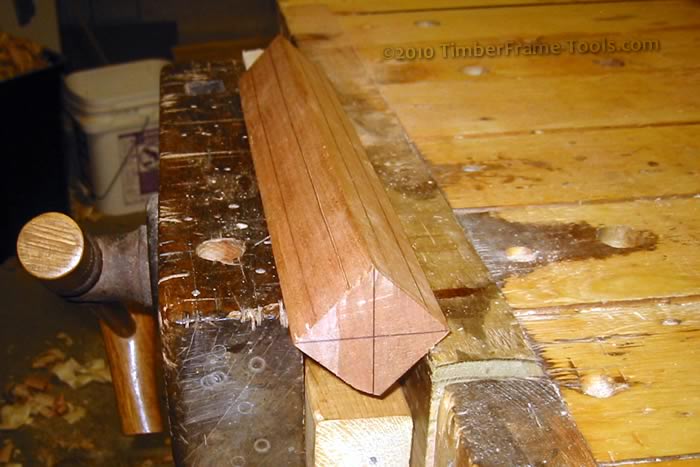
Secured in a vice with a stop block on the far end.
- Secure the wood on its corner (short pieces can be placed in a vice with a stop block, long pieces could be secured in a v-block).
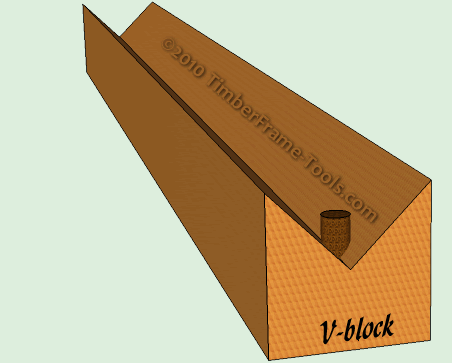
V-block for holding wood at 45 degrees while planing or drilling.
- Plane on the corner until you reach the lines you marked on the sides.
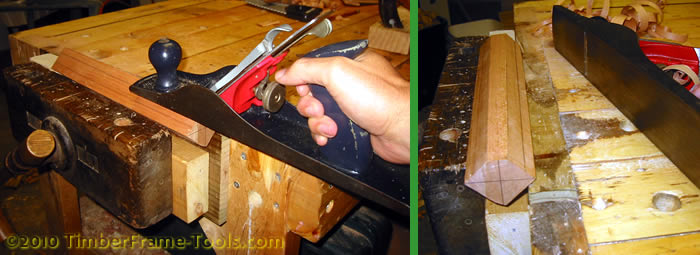
Rip-plane off the corners until you reach the marks you scribed.
- Rotate, the piece and plane the next corner off, repeat, repeat.
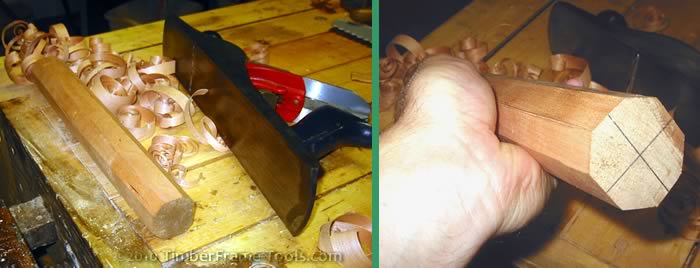
Removal of the 4 square corners leaves you with 8 octagonal corners and 8 sides.
This is the easiest method for narrow stock up to three inches square. Beyond that, a band saw or table saw might be faster if you have lots of pieces to do so that the setup time can be spread over all the pieces.
If you get to pieces that are too large for your dividers or compass, just use a ruler to measure and transfer the length.
Other methods for marking off an octagon from a square
Circle Tangent 45 – Draw a circle within the square, then use a combination square to create 45 degree lines tangent to the circle.
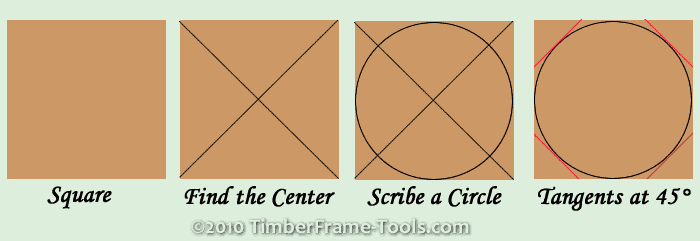
Here you can see it applied to cutting a flat octagon
Carpenters Rule – A framing Square, carpenters square or any ruler of sufficient length can be used. Skew the blade across the surface of the timber so that it starts at zero and ends at 10″ and then come in 3″ from each end and make your marks. Continue these marks down the surface parallel to the length and then repeat around all 4 sides of the square timbers, then saw to the lines. (lengths of 17 or 24 also work)
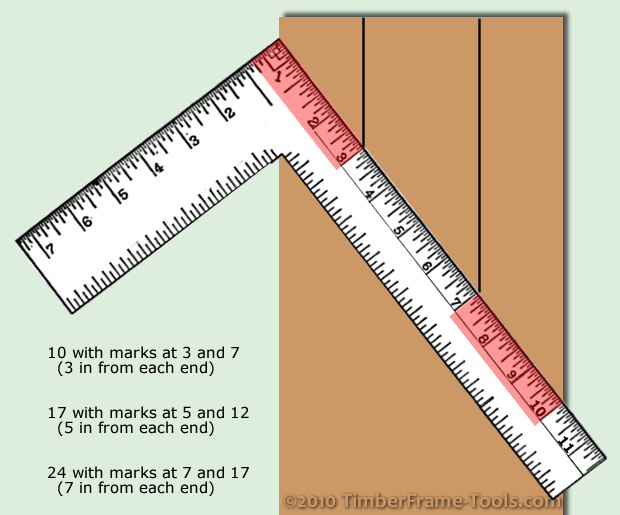
Create an Octagon Marking Gauge – If you make a lot of octagons, it is easy to make a gauge that can consistently scribe out the octagon corners on the lengths of square stock.
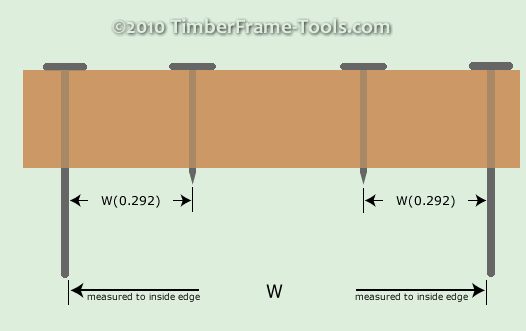
Pay close attention to where the dimensions are measured to. The outer nails are only bearing guides, so they get measured to the inside. The shorter nails are the scribes so it is the location of the sharp point that is important. W just needs to be a bit wider than the stock you want to mark. Skew the gauge until the bearing gides touch both sides of the stock, then pull it the length of the beam. Pencils can be used in place of the scribes.
Bob Smalser has some details here for making one.
Arithmatic – Of course the simple, but hard to remember method is to just multiply the width of the side by 0.292 and that will give you the width from each edge you need to come in.